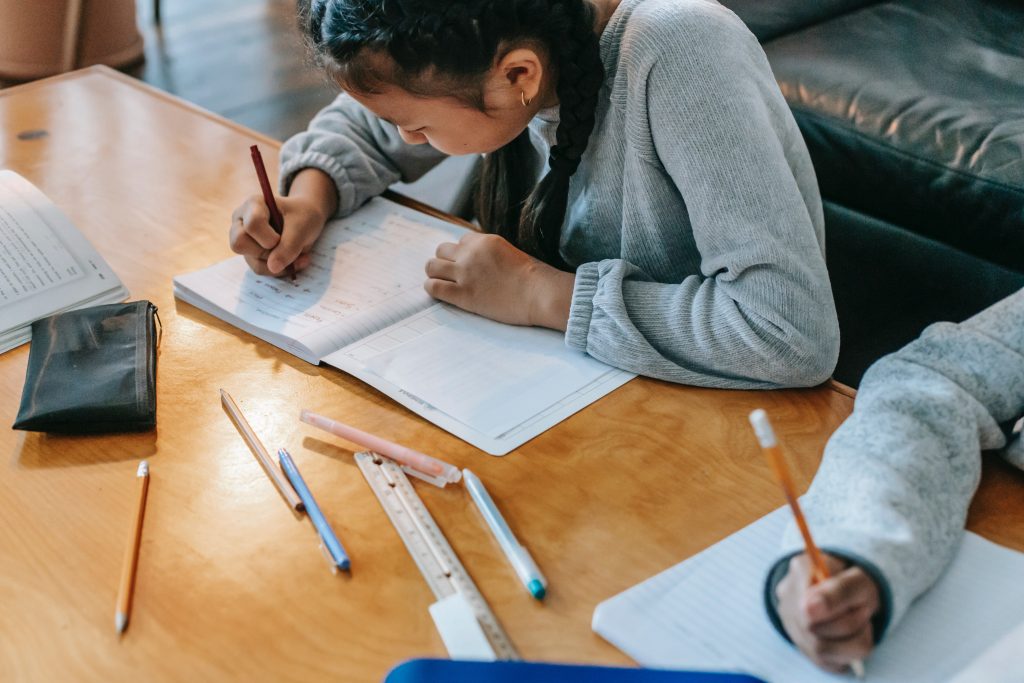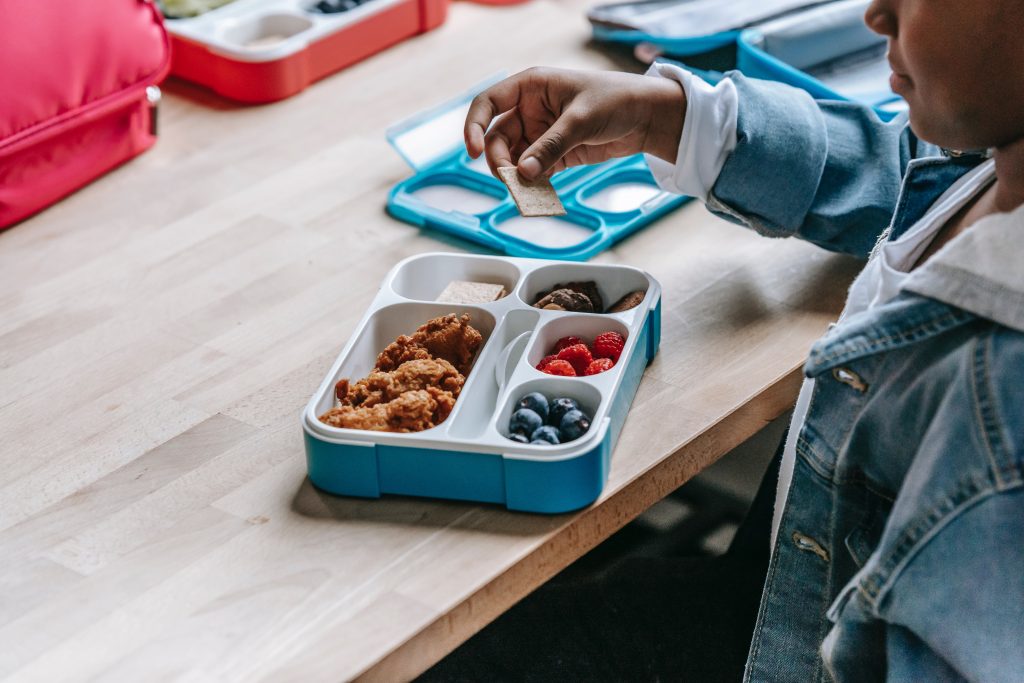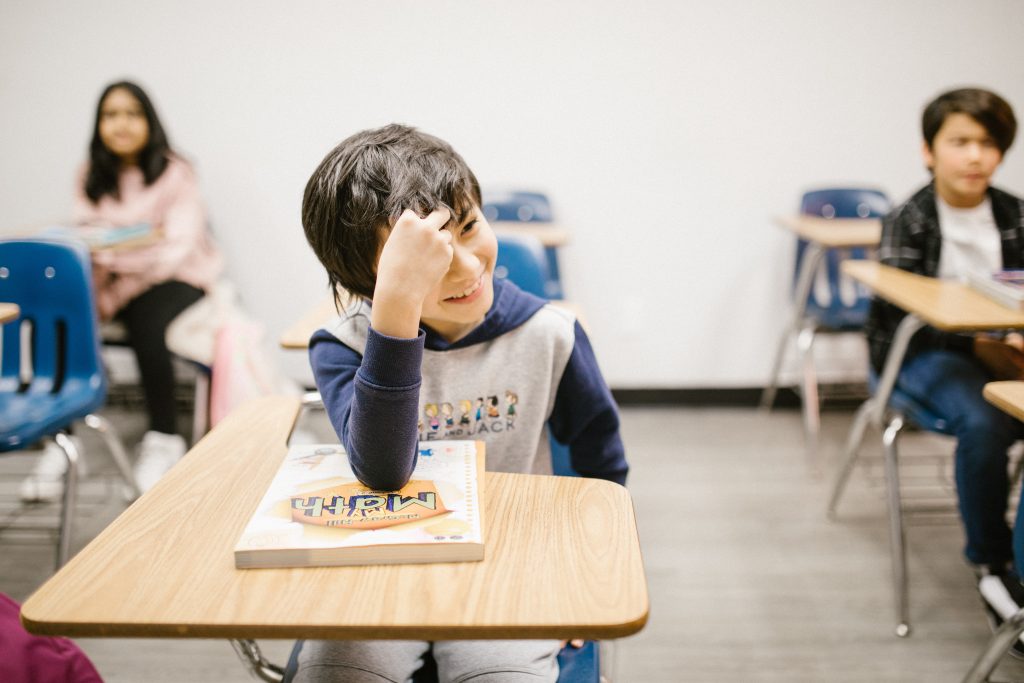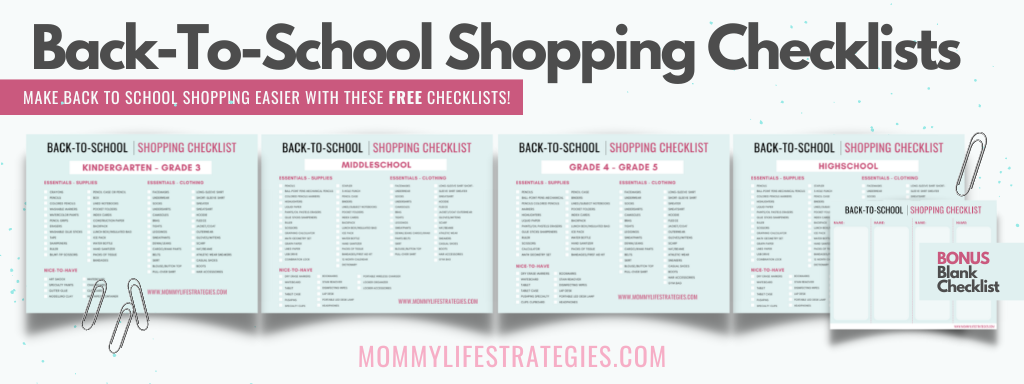
Whether your child is starting school for the first time or returning, going back to school can be a bit scary. There are steps you can take that make the transition to school a little easier and less stressful.
Let’s dive into what you can do right now to help you and your kids transition back to school with confidence.
This post contains Amazon affiliate links. An affiliate link means at no extra cost to you, I earn a commission if you make a purchase through my link. Please read my Disclaimer for more details.
Before school starts
1.Set expectations
Have a conversation with your kids and be honest about what they should expect. Now there are new rules and safety protocols around COVID-19 so be open about what they will expect at school.
The conversation is not to scare your child but to prepare them and adjust for the new school experience. Give them a chance to express their worries. Acknowledge and show you understand their feelings.
Help your child gain a sense of control over the situation so they can feel like they can start the school year with confidence and resiliency.
2.Help build healthy habits
Building healthy habits are valuable to children, not just for life right now but in the future when they become adults. Healthy habits take time and consistency so getting them started now is best.
Key habits for any child or adult are nutrition, physical activity, sleep, and managing stress.
Each are essential to a thriving child (and adult). There are many ways to encourage these habits, but it starts with you. Lifestyle plays a significant role in their habits too. While there are some exceptions like outside influences like friends, the lifestyle your family lives are the biggest influence.
There are plenty of resources available to help motivate your kids to build better habits. Here is a short list of good resources you might find helpful.
Tips to Help Kids Enjoy Fruits and Veggies
Easy Ways to Encourage Your Kids to Get Active
3.Give your child a comfort item
If you have a preschooler, a favorite stuffy might not be a big deal to bring to school. For older children, that might not be the case but that doesn’t mean they can’t have a comfort item to bring to school.
It could be a stress-relief ball, anti-anxiety bracelet or other school-safe fidget item. A family photo taped on the inside of the front cover of their notebook or binder can also be very comforting.
Be sure to check with your child’s school and discuss with their teacher if a comfort item is allowed. It might not be a problem at all but it’s still a good idea the teacher is aware of any anxiety your child is having.

4.Have a parting plan
Saying goodbye to your little ones can be hard especially if they are starting school for the first time. Have a less-anxious and no-tears goodbye plan can help ease the anxiety. Practice your goodbye routine before school starts if possible. Make it fun so that when the big day comes, it’s not so scary.
It’s a good idea to visit the school beforehand if the school will allow it. Some schools might not allow tours because of new rules and regulations around COVID-19. If it’s not an option, try to arrange a virtual tour.
5.Create a positive school vibe
For most kids returning to school, it’s a time filled with lots of excitement and anticipation. If your children are not looking forward to the classroom you can help them get into a positive mindset.
Here are some things you can do to encourage a more positive attitude and set the tone for the new school year.
Have your child get in touch with other kids going back to the same school. Getting back in touch with previous classmates can get your child excited about school again.
Create a vision board with your child. Make school inspiring with positive words and images and have them hang it up in a place they can see daily. Use motivational quotes, image, and/or stories to help them visualize a positive school outcome.
Encourage your child to change negative thinking and language. If your child is worried about returning to school using negative language like, “I hate school”, “I won’t get good grades” make sure to confront those fears with him/her. Ask why they feel that way and how you can help them think more positively.
Help you child set goals for the school year. Maybe your child is nervous about school because they desire to do better in Math class. Whatever the reason, it’s important to discuss their concerns and what they desire to achieve. Help them succeed through visualization, planning, and goal planning.
Let you child know that you will help them succeed and while school has its challenges, it’s important to maintain a positive mindset.
6.Encourage respectful behaviors
The best way to encourage respectful behaviors is to set an example. How we interact with others and our responses, help give your child a good foundation on displaying respectful behaviors.
If your children are young and are still learning what being respectful is all about, demonstrate in everyday settings. When you’re at the grocery store, visiting family, make sure they are present and listening when you say, “Thank you”, “Excuse me”, “Please”, etc.
When your children display respectful behavior, praise them. It’s necessary feedback to keep the positive behaviors going.
Cooperation, sharing, patience and displays of kindness are all important behaviors children and adults should practice daily.

7.Let your child create lunch ideas
Moms are usually the ones to plan and prepare all the lunches. Most kids love food and snacks so why not let them prepare a list of lunch ideas. They can write down the foods they like to eat on a piece of paper or if they are younger, they can cut and paste from old foodie magazines.
A super easy and fun way to get your child involved with the back-to-school prep while keeping them busy. Win-win.
8.Bring them along for one shopping trip
Bring them along for one shopping trip to buy a new lunch box, some school supplies, or a cool backpack. They don’t have be present for all the back-to-school shopping, but it’s a good idea to get your child involved a little bit as it’s also part of the preparation.
To avoid your child wanting to buy everything at the store and possibly taking a tantrum, have a list of exactly what you will buy.
Establish a boundary and firm with your child that you will be buying that item only today, nothing else. If you want to avoid in person shopping, online shopping from the comfort of your own home is great too!
9.Connect with the teacher
Make a teacher card to let you child express appreciation and share a little bit about themselves, like their favorite books, food, games and what they’re excited about learning. About Me and About You cards.

10.Read some exciting books
Read some encouraging books about school. Books are a great way to calm back to school nerves. Engaging stories can help them prepare for the school routine, it gives them an idea what to expect, and be ready for the unexpected. There are many back to school related books for different age groups at your local library.
11.Create a visual routines board
A visual routines chart is like a visual schedule. It’s a chart with pictures of the tasks a child does during the day. For example, their morning routine includes waking up, eating breakfast, brushing teeth, getting dressed, packing bag and head to school. Each task will be laid out visually making it easy for littles ones to follow.
For young ones, a visual routines chart or board can provide structure, certainty, and independence. Helping their daily routines with a visual routines chart can give them a sense of control during the transition to back-to-school. It also helps keep daily routines organized making mornings and after school tasks easier to follow.
12.Get kids out to play
Maybe your child has been keeping distance from other kids for a while and are slowly getting them back to socializing. If you can, get your kids out the play with other children whether that be at the park, playground, summer clubs and programs before school starts.
It can help reduce any social anxiety about meeting new kids at school. It might also help them get excited about school as they might have some conversation with other kids about going back to class.

The first day of school
The first day of school is a big deal for kids and for you too. Create some excitement with activities that make back to school a positive experience. Here are some ways you can get your kids excited on the first day of school.
13.Make a fun & healthy breakfast
Try something different for the first day back at school. Fuel your kids with some exciting back to school breakfasts that they will look forward to in the morning. Here are some great breakfast ideas.
14. Leave an "I love you" note
Get some prewritten “I love you” notes or positive messages ready to put in their lunch bag or notebook. Everyone feels better when they know their loved ones support them. A simple caring note or message can help make your child feel better.

15.Have a mini celebration
Celebrate your child’s first day back at school with a little something to show you are proud of them. Bake a batch of cookies or make an ice cream sundae, ready for when they get home. You can decorate too, blow a few balloons, hang some streamers, or have a goody bag with treats. The surprise can cheer them up if their first day was not as expected.
16.Talk to your child
Have a conversation about how their day went. Ask them what they enjoyed the most, and what they didn’t like. What did they learn, students in the class (their names, interests), ask for specifics. They might forget in all the excitement and that’s ok. It’s still good to ask and helps them process the day and recall events. The habit of asking them about their day, gives you some valuable insight too.
Questions you can ask your child on the first day of school:
- Did you learn any rules in your classroom?
- What did you read today?
- Who did you play with at recess? What did you play?
- What was your favorite activity in class today?
- Who did you sit with at lunch?
- What did you learn today (tell and/or show)?
- What did you do anything that hard?
17.Collect & read school papers
You may already have a lot of school info send via email or school website but it’s still a good idea to read all the information that your child’s school provides. Keep this up throughout the year as it won’t just be on the first day your child will receive important papers whether to read and/or sign.

18.Create a space for downtime
School can be exhausting for some kids. Especially when they’re going from a relaxed summer break to a fast paced schedule. They will need some downtime. Create a quiet and comfy space for your kids to relax and recharge. It can be any space that they feel comfortable and relaxing, their bedroom, a favorite spot in the family room or yard.
The first week of school
A week may have passed but your kids will still be adjusting to school and experiencing a variety of emotions. Reassure your child and let them know that you are there for them. Make yourself accessible whenever they need you, so they know that they’re not doing it alone.
19.Be patient
Be prepared for some moodiness as they adjust to school and the structured routine that comes with it. Be patient, understanding and give them a bit of space to decompress at the end of the day. As adults we need to decompress after a long day and forget that kids need that too.
20.Get their thoughts
Ask them about what they think about their teachers, the names of their friends or the other kids they play with at school. Express the importance of their relationships with their teachers and other students. Your child’s understanding of the importance of relationships can help them do good in school.
21.Maintain fun family rituals
Keep a fun family tradition going throughout the year. The fun shouldn’t come to a screeching halt when school starts. Keep a fun and enjoyable family ritual throughout the year.













